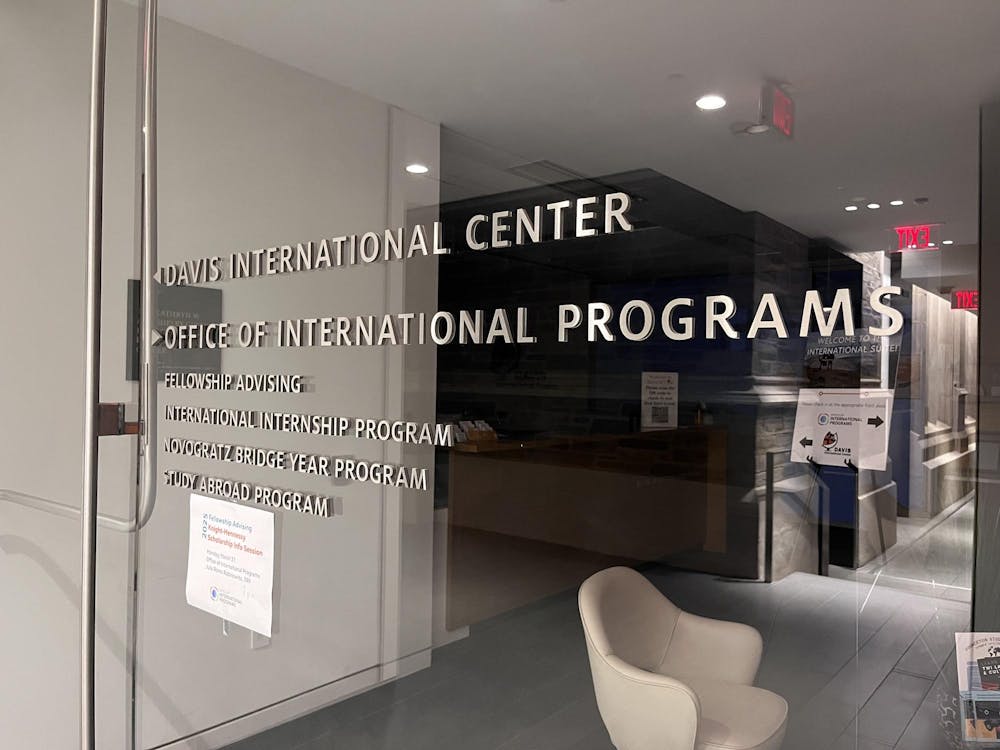Politics professor Carles Boix, astrophysics professor Adam Burrows ’75, molecular biology professor Lynn Enquist, art and archaeology professor Hal Foster, physics professor David Huse, mechanical and aerospace engineering professor Chung Law, art and archaeology professor emeritus James Marrow, Wilson School professor Nolan McCarty and economics professor Wolfgang Pesendorfer were named by AAAS, a prestegious society that recognizes top academics of all fields.
Fellows are recognized for their research in the sciences, social sciences, humanities, arts, business and public affairs.
With nine fellows selected, the University tied Stanford, the University of Chicago and the University of California, Berkeley, with the second-most fellows this year. Harvard led all schools with 17 fellows.
The professors said they were humbled by the announcement.
Boix said in an e-mail that he was “honored” to join “a fabulous set of scholars.”
Boix has focused primarily on studying “the origins and persistence of economic inequality” and has examined the “factors that lead to the emergence of stable democratic institutions across the world” in his research.
Marrow said in an e-mail that he was “humbled by the names of most of the former fellows cited in the letter of notification.”
Marrow, whose research focuses on 14th- to 16th-century medieval art from northern Europe, has a “particular interest in illuminated manuscripts and questions of meaning in works of religious art” and has been involved with exhibitions on medieval illuminated manuscripts across the world,” he said.

“I have played a role in re-orienting discussions from questions of ‘what’ works of art mean to matters of ‘how’ they mean,” Marrow explained.
Burrows, who said in an e-mail that he was both surprised and gratified to be honored, explained that his research focuses on “supernova explosion theory, nuclear astrophysics, computational astrophysics and planetary astronomy.”
Burrows said he is currently studying exoplanets, or “planets recently discovered to exist in profusion outside our solar system and around stars in the solar neighborhood.” Roughly 500 such planets are currently known, Burrows added.
In his research, Huse has investigated vortices in superconductors, materials which, he said, “conduct electrical current without loss at low temperatures” and are widely used to produce the magnetic fields used in applications like medical magnetic resonance imaging.

“These vortices are literally little ‘whirlpools’ of electrical current,” Huse explained. “And the motion of these vortices can disrupt the superconductivity, limiting the electrical currents that the superconductor can carry, as well as the magnetic fields that the superconductor can withstand.”
Enquist, Foster, Law, McCarty and Pesendorfer could not be reached for comment.
Enquist’s research focuses on investigating the mechanisms of herpes virus pathogenesis, specifically the ways in which viruses parasitize their hosts’ peripheral nervous systems.
Foster studies modernist and contemporary art and theory, and he is currently authoring a book on pop art.
McCarty researches political polarization and employs game theory in much of his work.
Law has investigated the fundamentals of combustion, as well as broad applications to related topics such as propulsion, energy and environmental issues.
Pesendorfer has produced research covering topics ranging from addiction and self-control to partisan politics, once publishing a paper titled “The Case for Mindless Economics.”
The AAAS, which was founded in 1780, is an independent policy research center whose 4,600 members boast 250 Nobel laureates and more than 60 Pulitzer Prize winners.
Founded during the Revolutionary War by leaders such as John Adams, James Bowdoin and John Hancock, the AAAS’s mission is to “cultivate every art and science which may tend to advance the interest, honour, dignity and happiness of a free, independent and virtuous people.”







